October 9, 2016
Martha O'Kennon
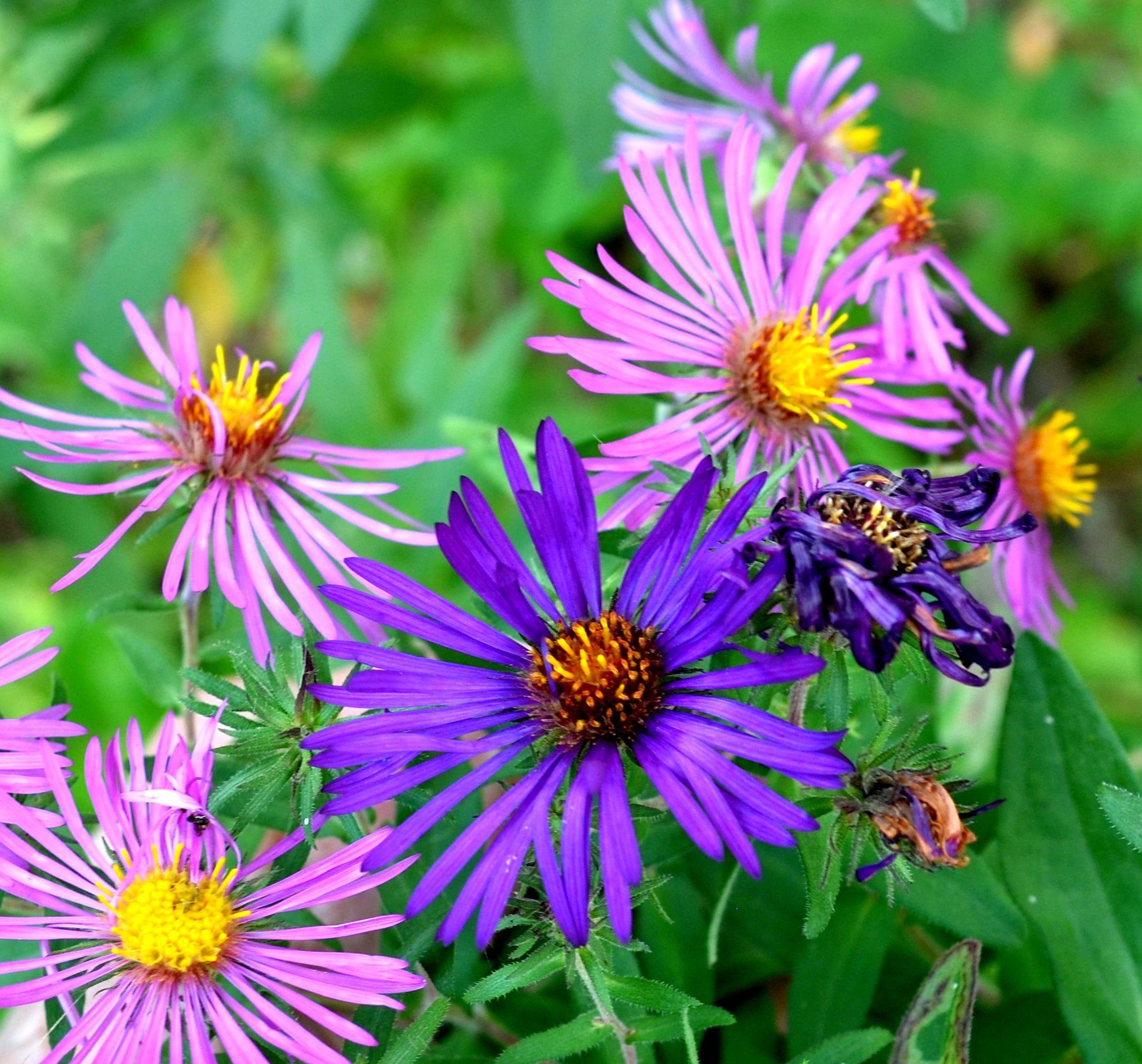

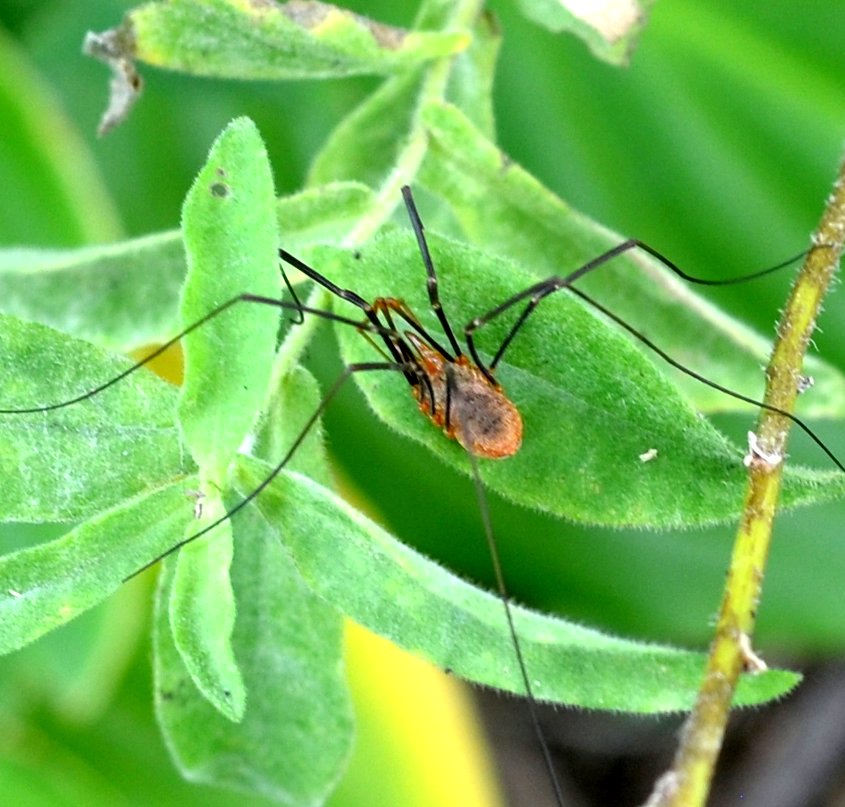
Fall weather was MUCH nicer this past week. We had rain once in a while but not the pelting kind that takes the whole stand of asters and pounds the flowers' heads into the mud. No, not this week. And today is maybe the most amazing kind of day. Warm noon but fine to have the window fans working to blow out the warmer air inside out and the cooler outdoor weather in. Color was supplied mostly by the aster flowers and the aster foliage. But the middle image shows the tiny bit of gold left in a few sprays of goldenrod.
Remember that there is information in the name of the file for each image. You can see it by mousing over the image - look at the lower left of the screen.
I would try clicking on the image. If the little "+" sign appears, it means you can enlarge again. While it is in "+" mode, click on something you want to see more clearly and it will zoom to that section. Then the info is displayed in the address line above. If the image has been cropped
so that clicking on it doesn't result in a larger picture, you can always hit control-plus to increase the size of the image.
After last week's disappointing ant gallery, this week's will hopefully make up for it. First up, a good-sized reddish-brown ant in the goldenrod remnants -- no clue what they are called by those who know everything -- and then a big carpenter ant running around down at the wooden base of the shop! Get your teeth off my shop, big-toothed monsters!
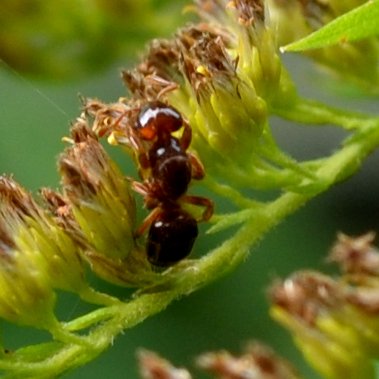 <
<
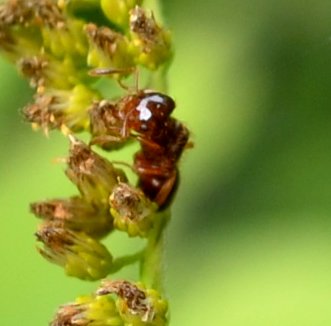
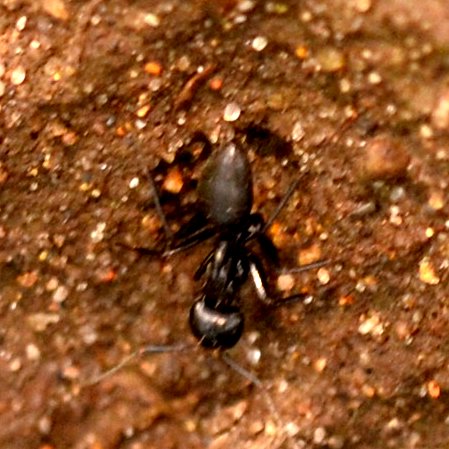 ,
,
Usually the summer brings quite a few barklouses, but it was until this week for the first real ones to show up! But now the usual stream of bees shows up unabashedly to try to capture the end-of-season nectar and pollen. Here is that very small half-sized bumblebee that has been a constant visitor. It has a tell-tale black butt, typical of its species. And a little honey bee, shown here so that her little pollen sacs appear all full.
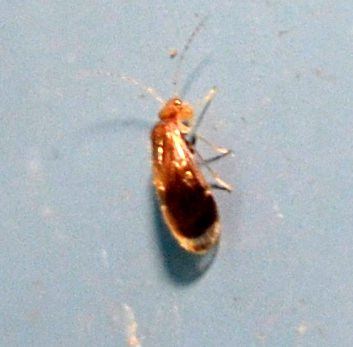

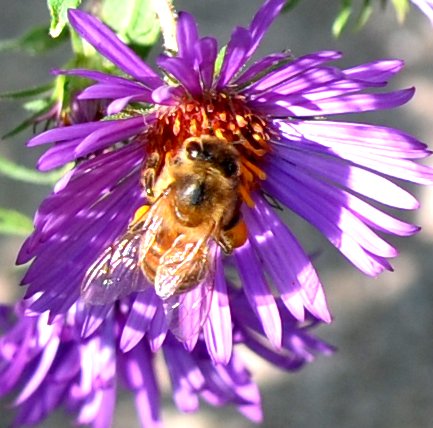
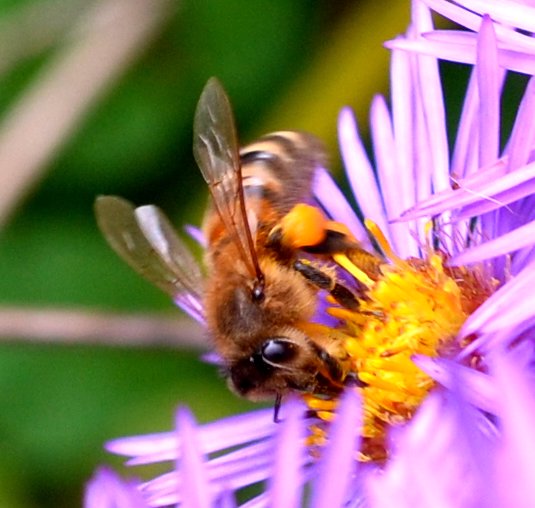
Some of the "honey" bees have darker bands at the end of their abdomens; the larger metallic green sweat bees are out in force, but look how the green color changes with the light or direction of the photo capture.

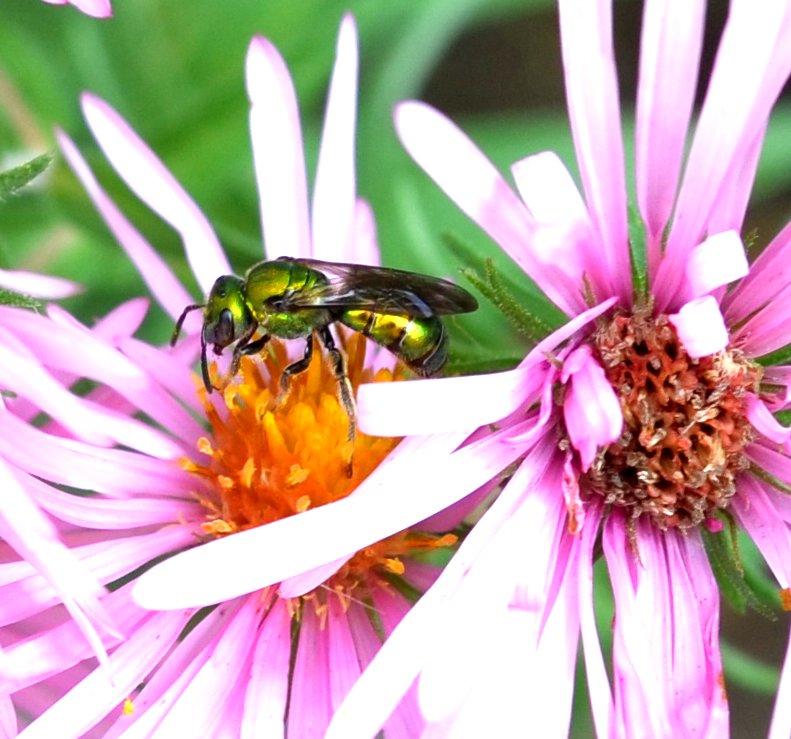
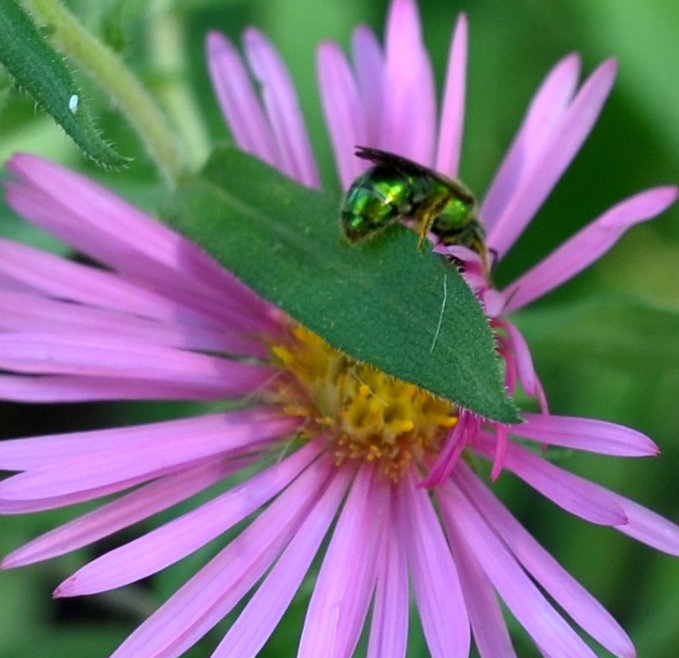
Now for the beetles. There was a nice array of them this week. First, that cucumber beetle that has been eating strange holes into the aster flowers; Beautiful but deadly! Then something that looks like a Lady Beetle. And a mystery that looks to be something between a beetle and a bug, I'm not sure...
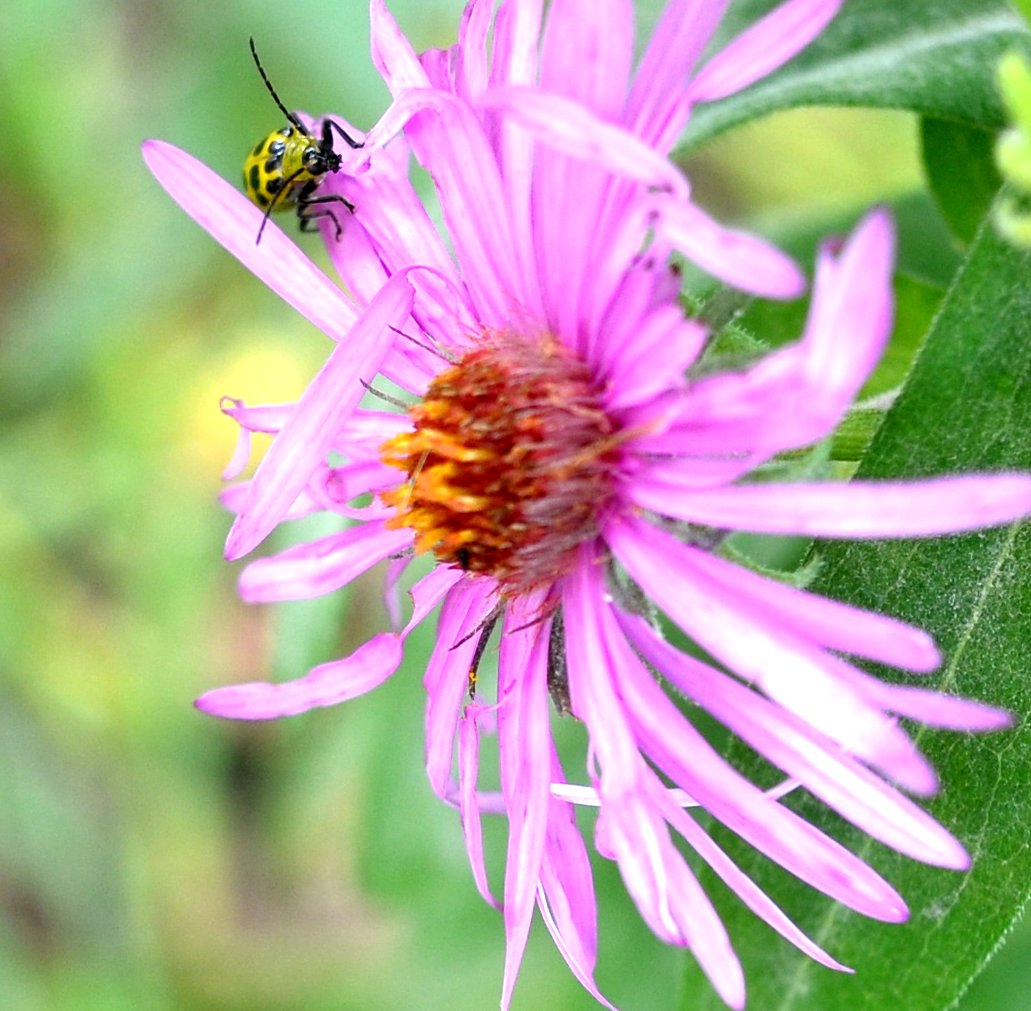
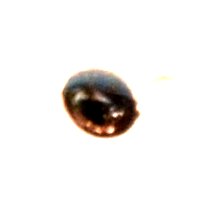
.jpg)
A few more beetles: the lowly 3-Lined Potato Beetle; a mysterious one who was hanging from a spider's thread; and a redbud bruchid - the one whose larvae grow inside a redbud pod and eat up the seeds.
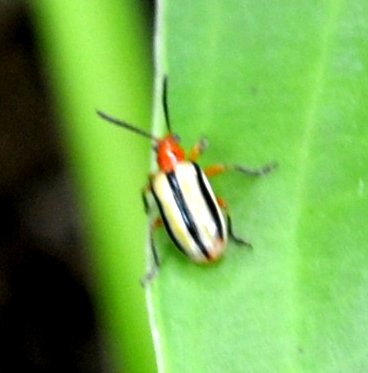
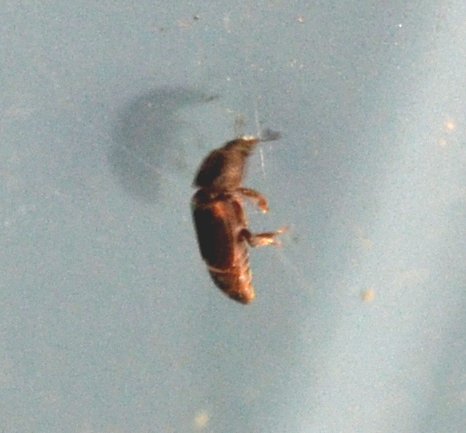
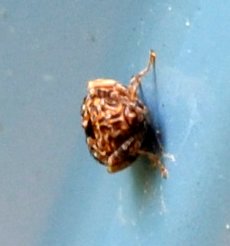
Is this reddish pruney beetle also a bruchid? I'm not sure - it has the right wrinkled skin but no pictures of it in the bugguide search. But the one that IS right is this beautiful weevil - the Thistle Weevil - found not more than five feet from one of the Thistle plants that is now brownish-grey and empty of life.
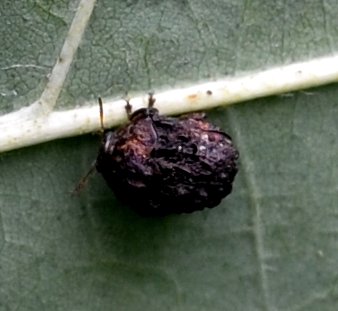
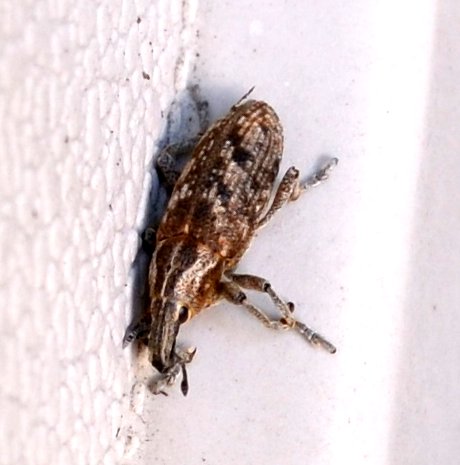
Every day seems to be a good day for assassin bug nymphs. Here are a green one (Zelus luridus) and a brownish one too. I don't know what the brownish one grows up to be, but it will be one of the assassins. This one fooled me at first because it is the season for boxelder bugs. But this is actually the small milkweed bug!
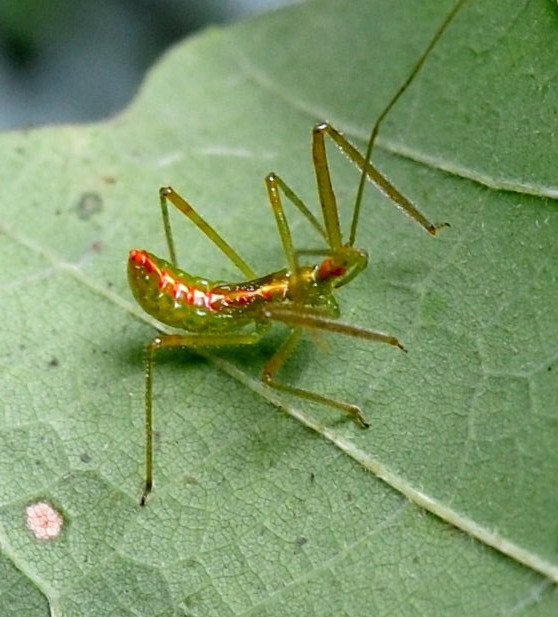
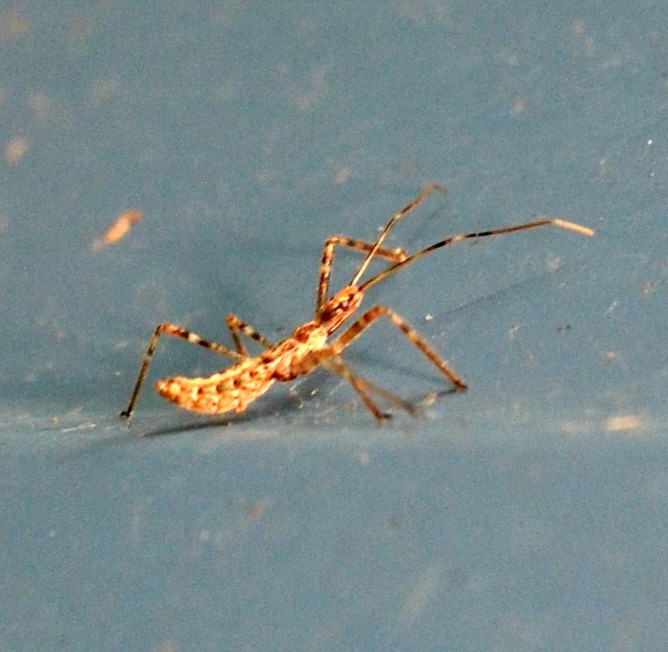
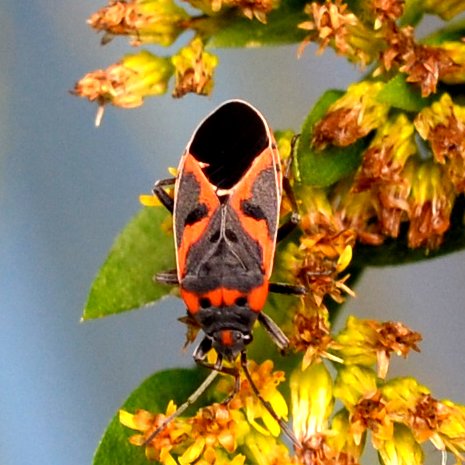
We actually were visited by several kinds of leafhopper. This one was perplexing due to the angle of the shot. Here's a better picture from July 15. In case you've forgotten, they also appear in blue shades, like this one from June 24 of 2015. Now you can see that this bug has many more spiked legs than the usual leafhopper, which usually has only the hind (jumping) legs all spiky. Coming in from the rear, the spikes are what you see, but not the pretty pattern, which looks as if it were printed all over our bug.
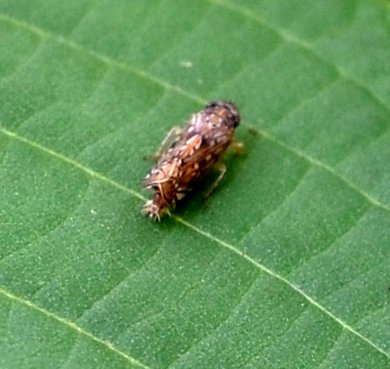

 -- Deltocephalinae -- Scaphoideus- 6 24 15 2a.jpg)
Of course, our true favorite, the candy-striped leafhopper, was to be found here and there, as was our other friend, Coelidia olitoria (the one with the CUTE little nymphs). The red on white one is actually blown up from a picture of a white thread-like "thing". Under those circumstances, it's so hard to see the pattern that you have to wait till you are cropping to be sure your camera actually captured a real bug! It's in the genus Erythroneura.
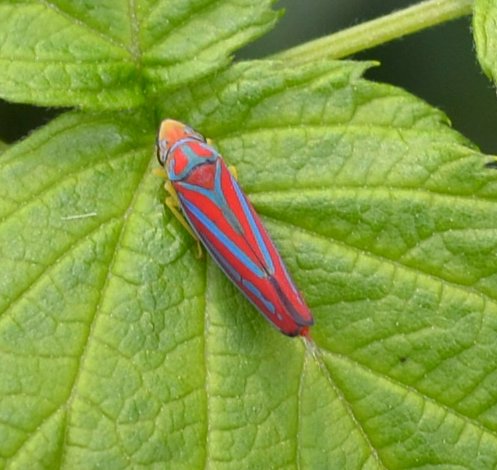
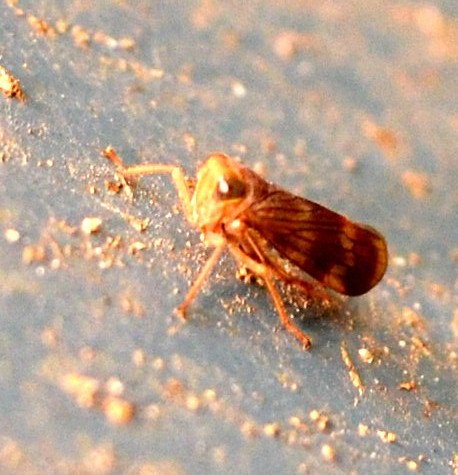
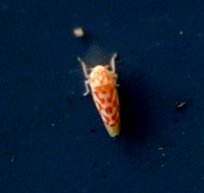
This bug was about a foot and a half over the top of my head so was shot from an extreme angle and facing into the sun as well. As for identifying it, I got to the ones with the muscular-looking rear legs, but stopped short of "leaf-footed bug" because there was no "leaf" on the back legs. So let's move on to the stink bugs. Is this one the one there is a warning out about? Last but not least, this reddish stink bug has been around for several weeks this summer..
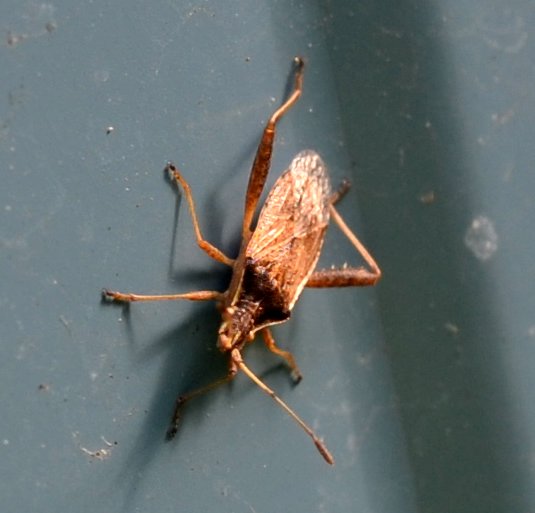
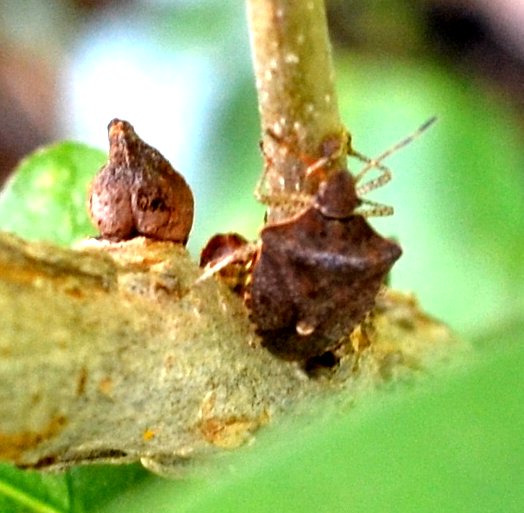
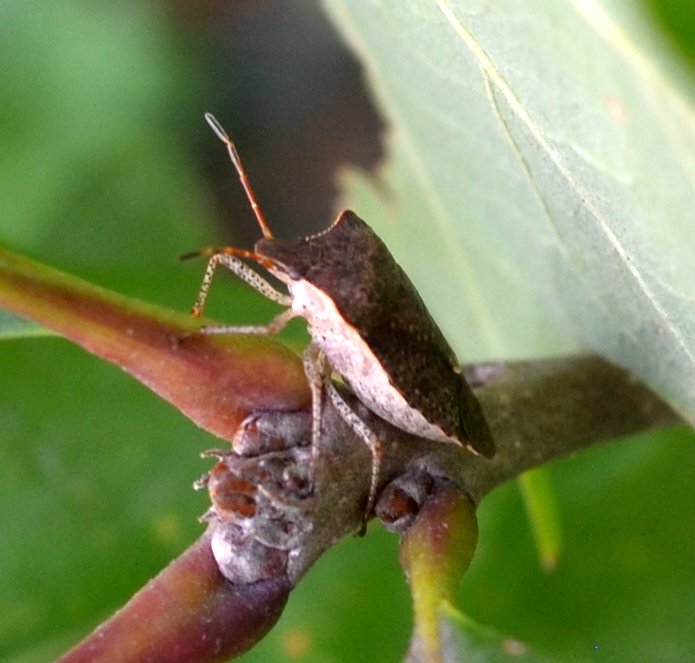
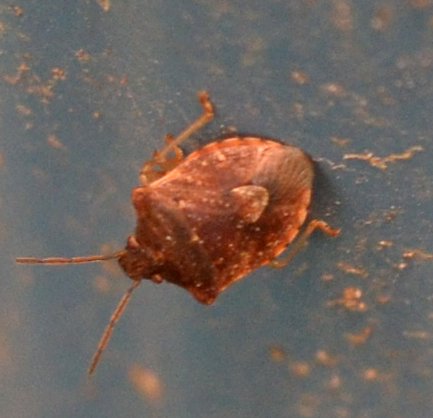
Twining around an old Tiger Lily stalk, here's a hello from the European Earwig! Echoed by one of its cohort in a pink aster! And here is one close-up of the fishes in the pond. The babies are really growing fast. I count six babies in this shot. At the upper right you see Tortoiseshell 1, Spot, and one of the black/brown babes. And at the lower left you see a black/brown, Stripe (it used to look stripier), and another black/brown one. Bigger fish at middle right: Red and Shubunkin, probably in their third year. The very fat calico fantail is Fanny, the mother of almost all the fish in the pond!
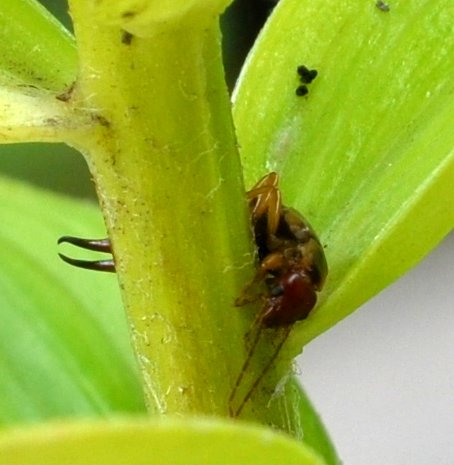
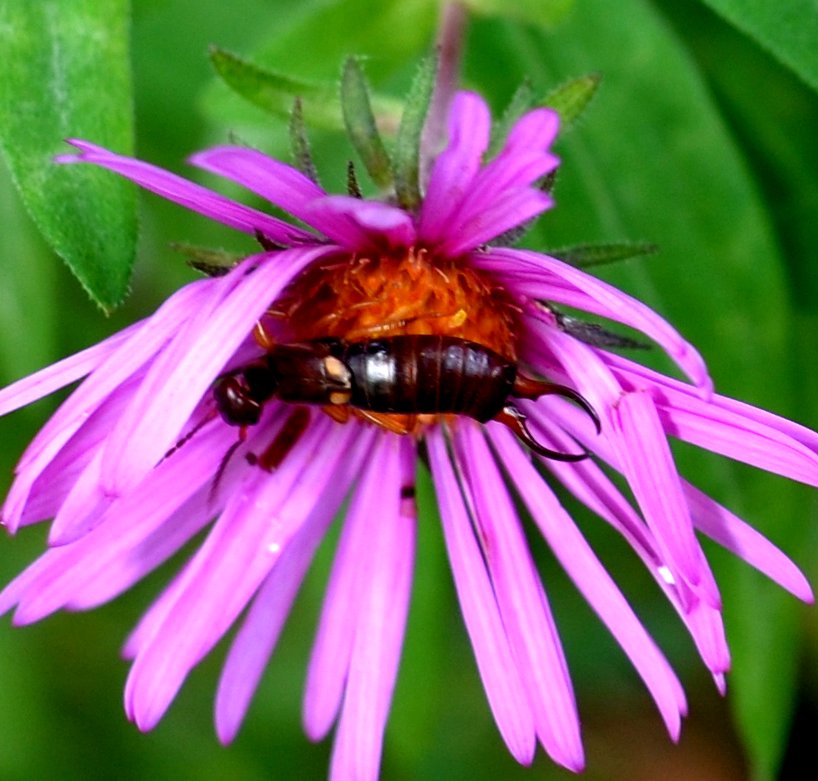
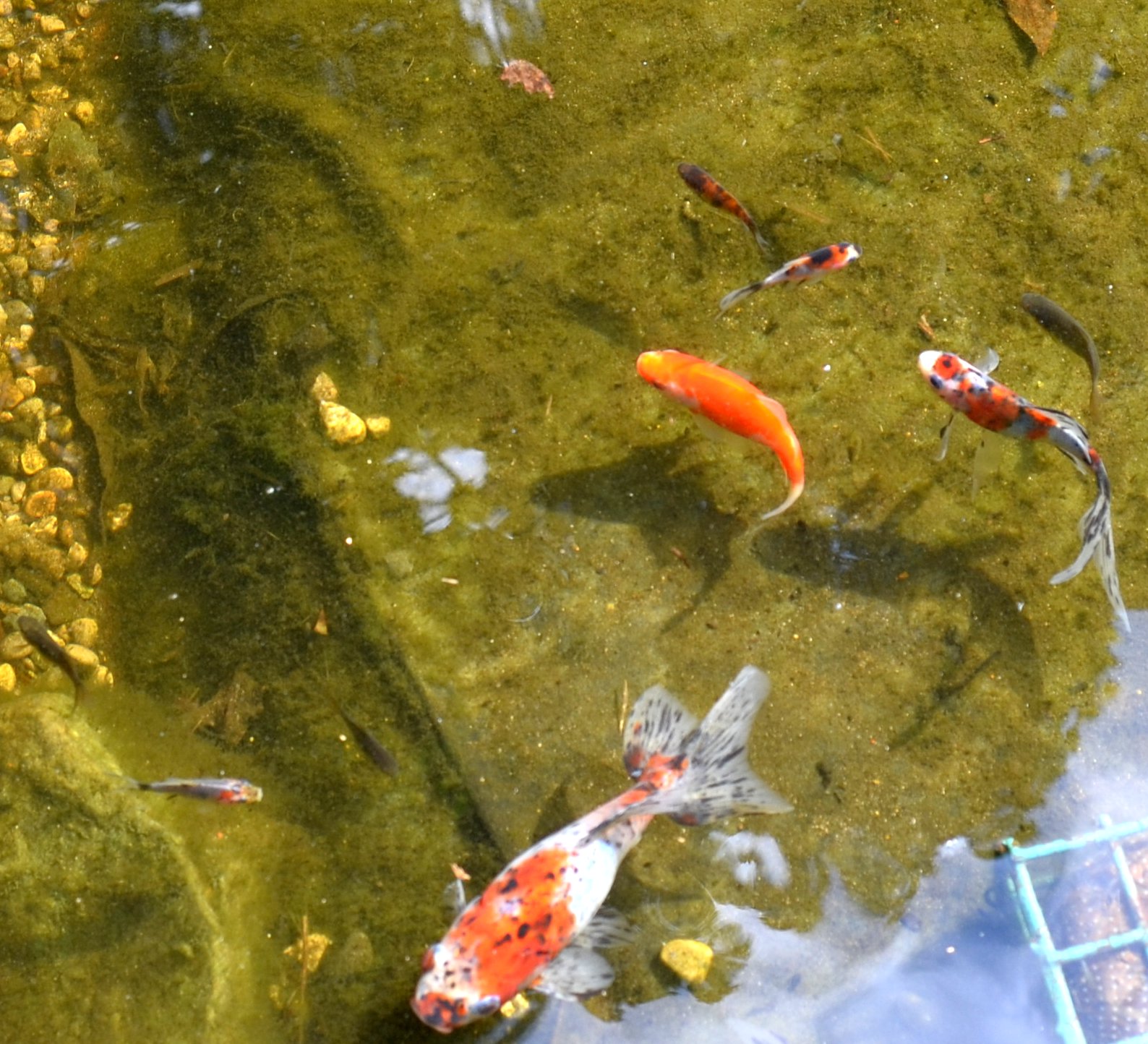
Here are a few pictures selected for their colors. First, the euonymus berries are turning red, a color which will attract winter birds. Or is this a picture of a "bug"? it seems to have two yellow-green eyes, a bright red body and pinkish wings. You be the judge. Some of the many colors needed to be splashed onto ones canvas when painting the purplish-pink aster. This last picture was supposed to show the harvestman in its brownish colors, but I didn't even notice when taking the picture, that there was a goldish crane fly or mosquito sitting right next to it. So that image stars the subtle colors of the harvestmen and the crane fly in a huge background of green on green!

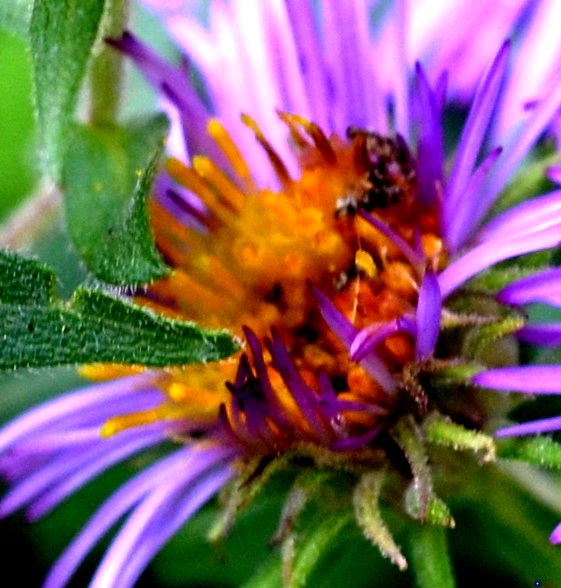
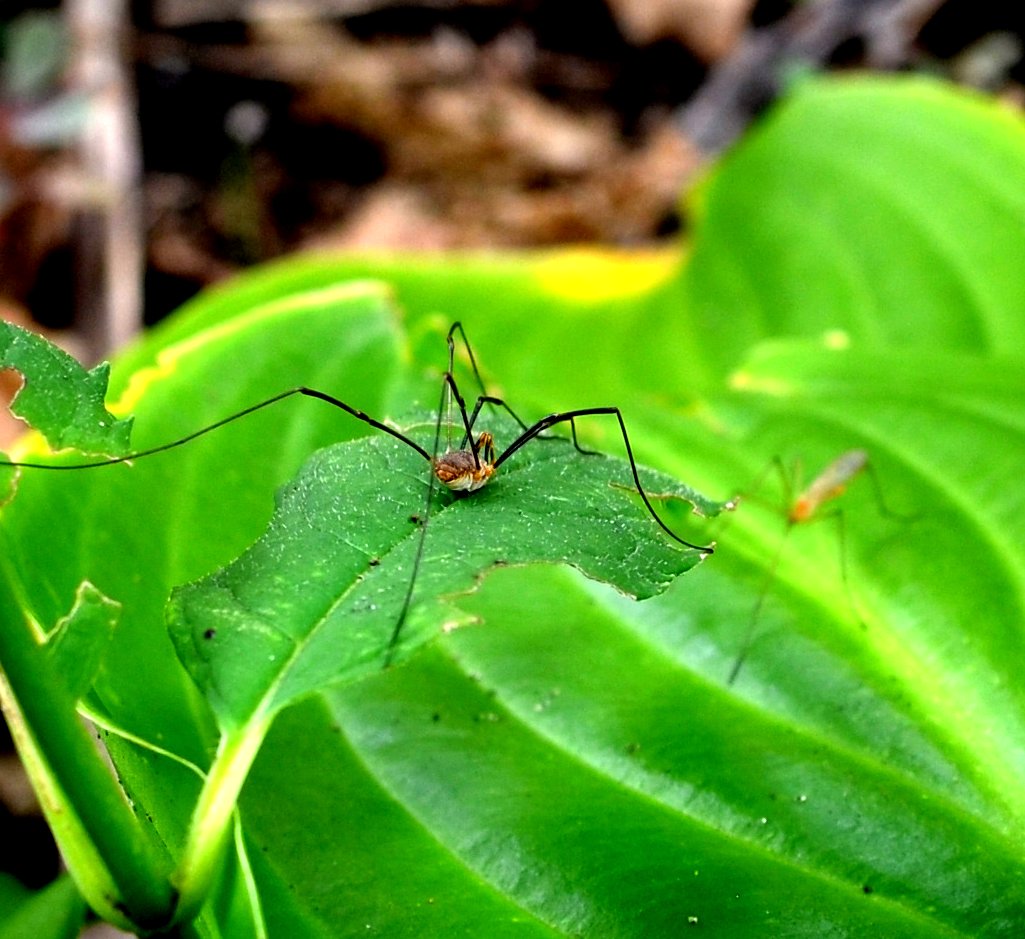
Now we have a number of fly portraits. This one looks to be our old friend in the genus Suillia. This crane fly I submitted to Bugguide a week or so ago, but hasn't come back with a name yet. The third frame is of that light orange crane fly we saw before waiting for the harvestman to turn around. Look how tiny are the heads of both crane flies.

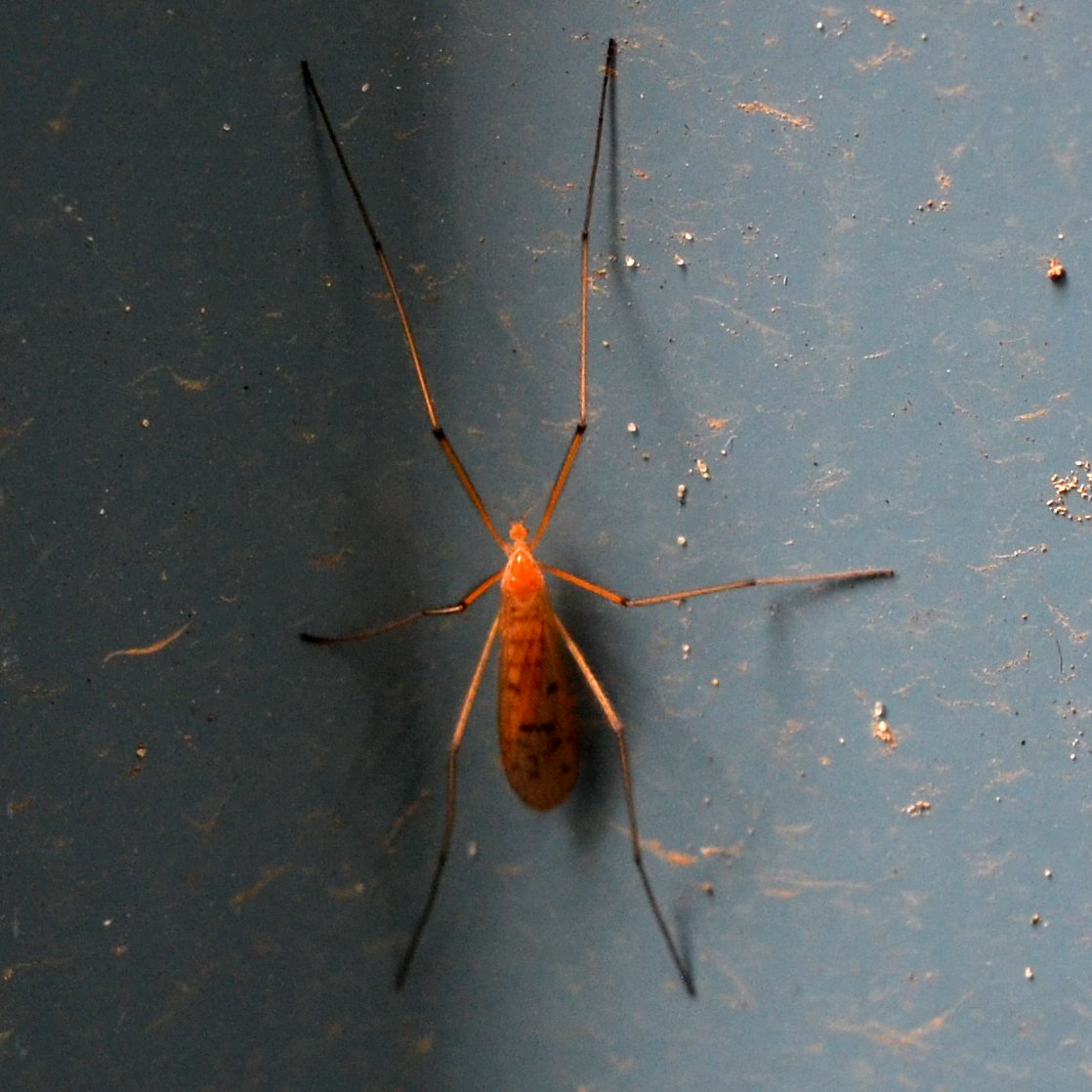
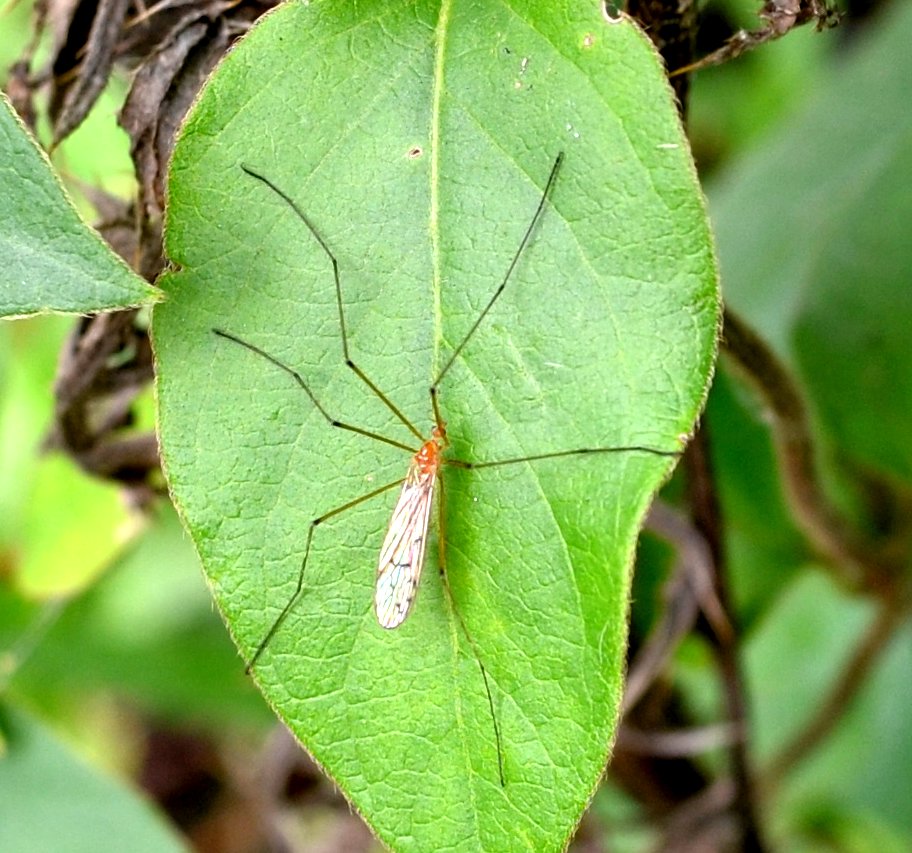
The head on this gnat is also pretty little. The middle frame is a mosquito, a female as you can see with an enormous rostrum (what pierces the skin and injects the anticoagulant, which is also the itch agent). This is probably what has been so active out there for almost a month so far. And this fuzzy (Sorry!) image is of what looks like a black and brown mosquito.
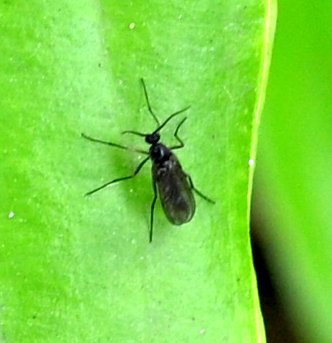
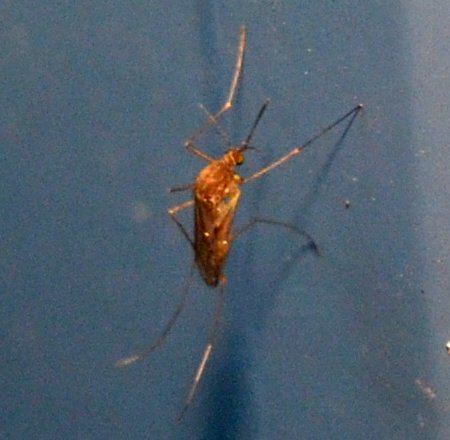
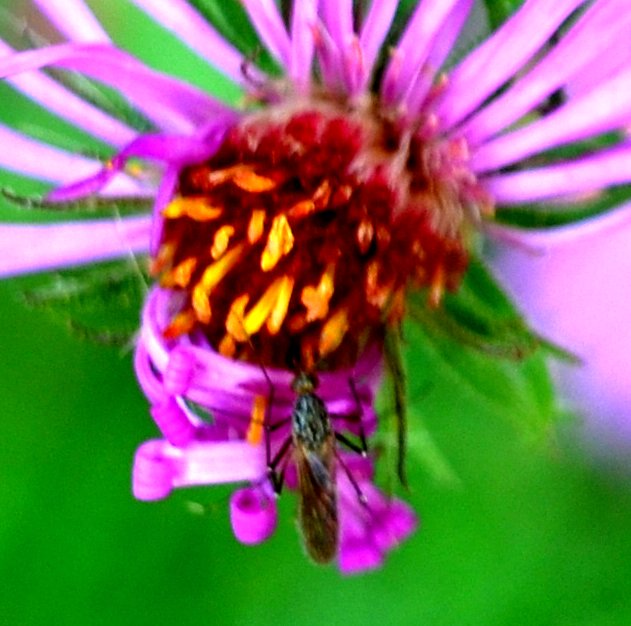
This is that moth fly again. They seem to be more and more similar to a moth. The picture-winged fly is back after some good long holidays. And again we see the yellow-winged fly with its bright red head.
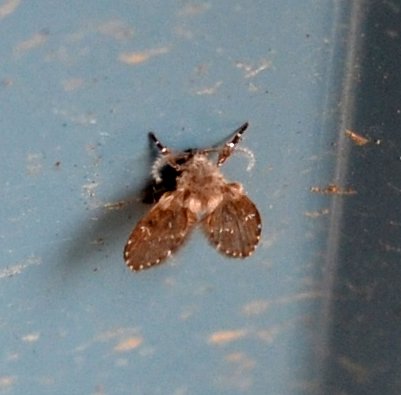
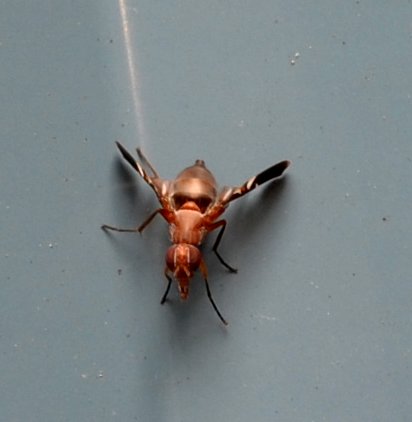

The flesh-eating fly never seems to go off on holiday. Such a beautiful fly with such an off-putting name. This harvestman has more of a brown than a pink design. But the pink/red ones are still around too.
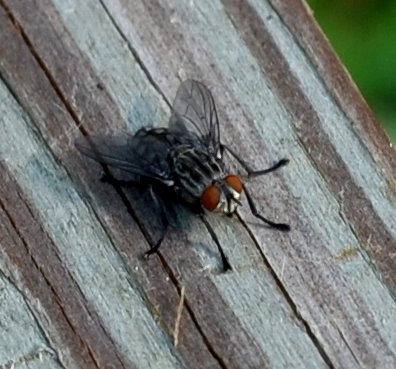


Here's the brown lacewing. The next one is a moth, probably a leaf blotcher or miner. The third seems to be a fly or some sort of soft-winged beetle.
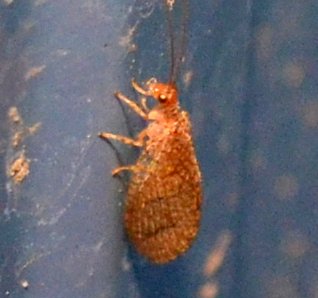
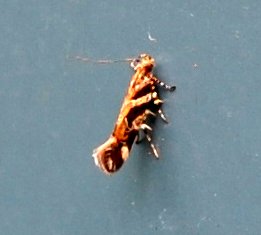

This common house spider seems to have a human face with a big nose. The next one in shiny black looks as if it has either some prodigious pedipalps or an unusually shaped black prey. And this one must be some species of long-jawed spider (witness its enormously long front legs!).

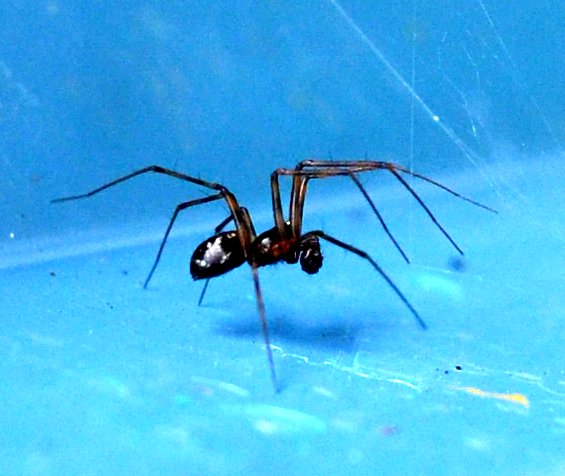
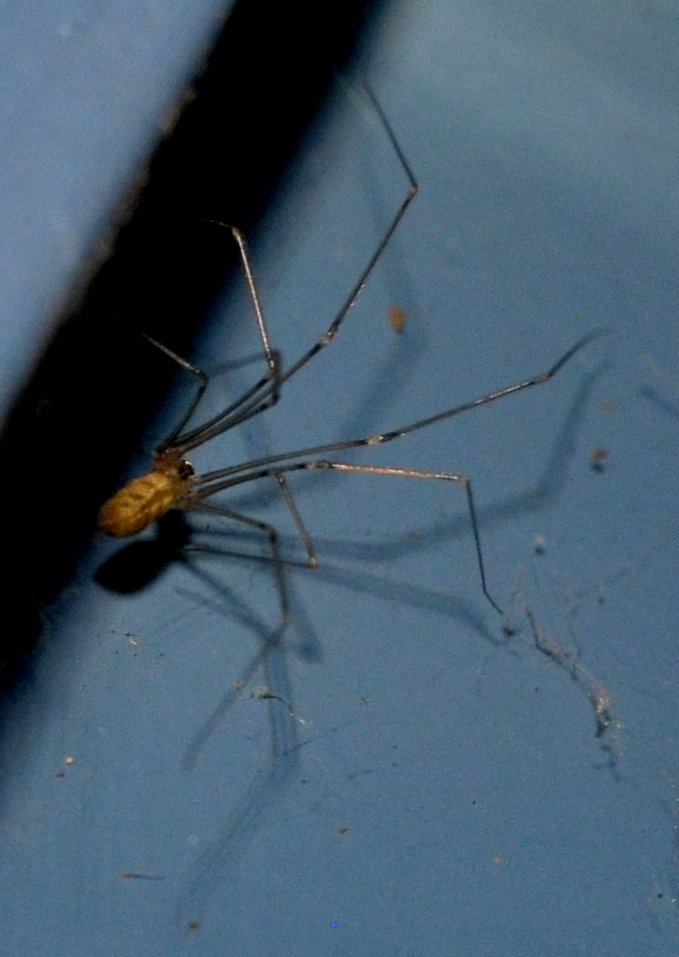
This seems to be a pregnant grass spider again. And here's one of my favorite jumping spiders, Naphrys pulex. This last shot shows how very very tiny the crab spiders start out.
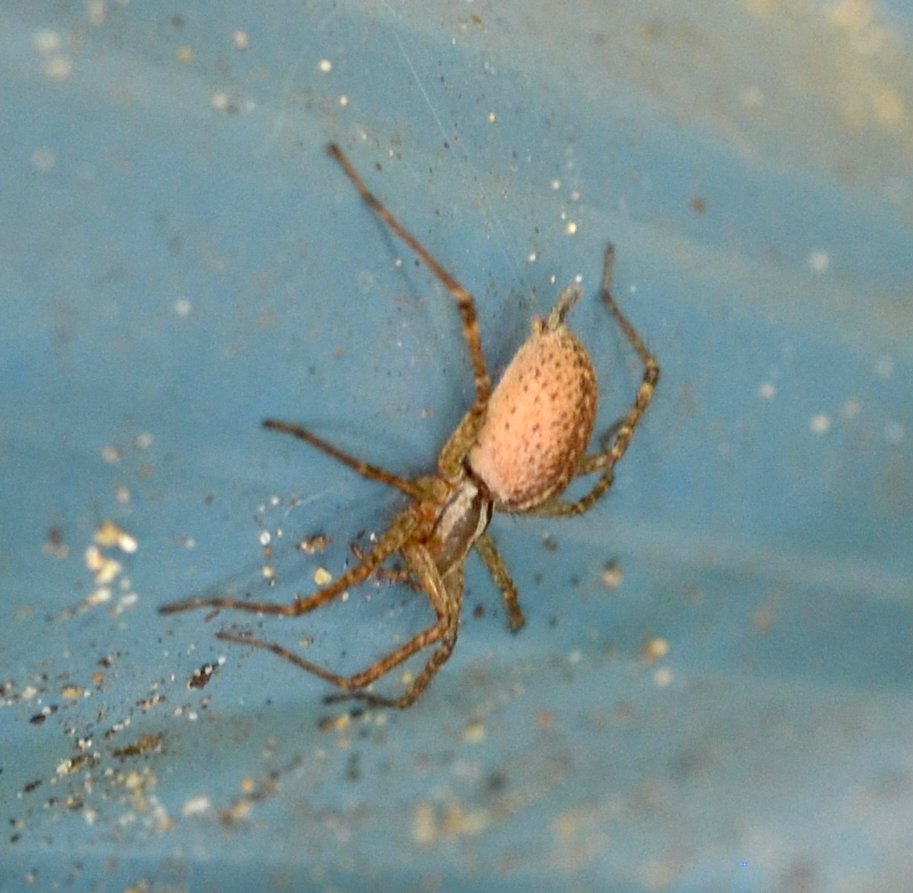
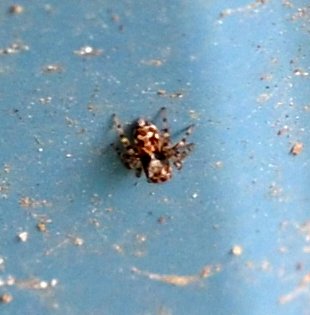

Here is a northern crab spider after it's grown quite a bit. It has its customary purple on white coloring. As you can see, a purplish-pink aster is a perfect camouflage for this beautiful little spider. In case you've forgotten, the crab spiders have the habit of holding their first two pairs of legs together and thus the resemblance to a crab.
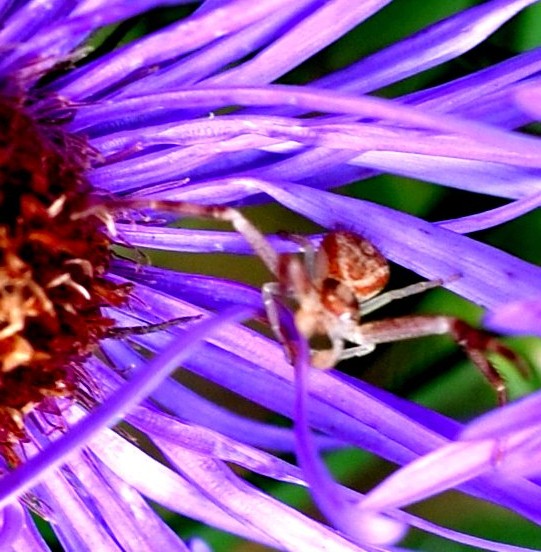
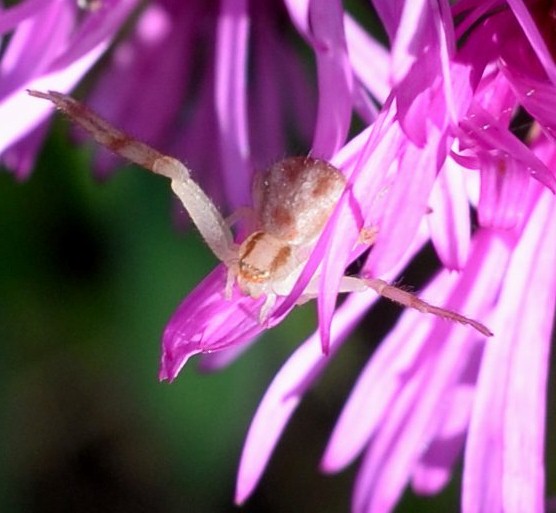
Sigh. The wasps are fewer and farther between. They seem to be less busy at visiting goldenrod -- the goldenrod season is over as far as my yard goes. Only rarely is there a tiny patch of gold and we will definitely have to wait till next year to see and hear the quantity of wasps again. But once in the past week I spied a bright yellow patch and on it was a tiny wasp - seemed to be a male Ancistrocerus adiabatus - looks just like the female but with no happy face on its back. Up in the attic, the whole paper wasp nest was being tended by just two European paper wasps. Here is one with her female face showing. I wonder where they will go when winter comes on. That's it for the wasps this week. MAYBE we'll have a wasp session again next week, but don't hold your breath!
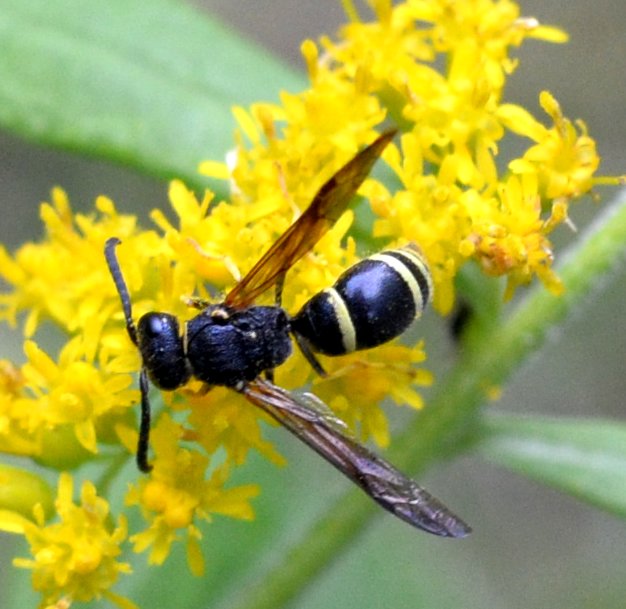
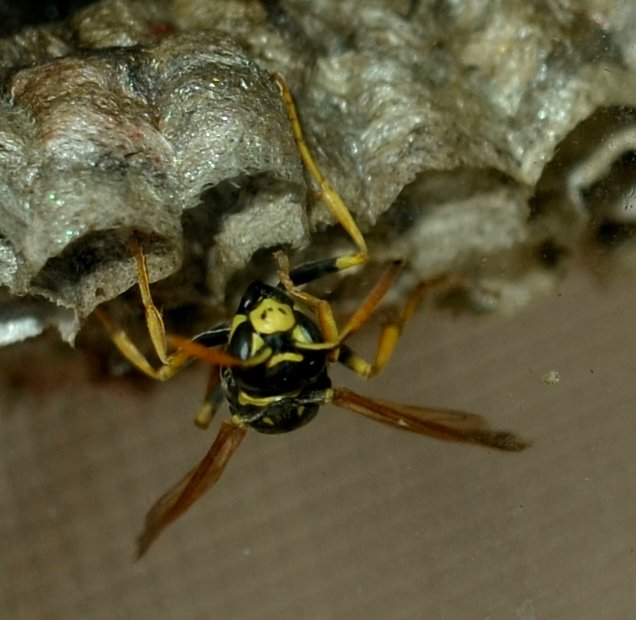
I haven't got photos yet, but here's the story on the little cat who had decided he or she liked my garden best. On Monday a member of Friends of Albion's Animals lent me a "hav-a-heart trap" and some Fancy Feast (expensive wet food)for bait. That afternoon I was out at the pond talking to the fish and heard a WHAM -MRAAAAAAAAAAAAOOOOOOO and when I stumbled up the steps onto the deck, there was a very panicky little cat - our little cat in the trap. Another friend came and helped me get the kitty out of the cage and into my cat carrier. The next morning (Tuesday) I called the vet and they said, "Bring him/her in". That afternoon HE was back in the cat carrier very much awake. I took him home and opened the carrier to butt up against the opening to what is called an "igloo". It's a styrofoam thingy shaped like an igloo but with a little bend in it to cut down the wind. I had already placed a new can (thanks Susan for the gift of Fancy Feast) of food at the back of the igloo, so he went in (anything to get out of that carrier.) That was the last I saw of him. He was gone quite soon, stitches and all, into the yard ruled by that big raccoon. The next morning he wasn't there, but the food was gone (GOOD), so I put out another can of FF. The next morning he wasn't there, and neither was the can of food. (The can did remain.) Yesterday afternoon I was talking to the fishes and a cat crept past me. Guess who. I went in and got a bowl of dry food and took it to about 6 feet from where he was. I backed off a bit and he came over and took a couple of mouthfuls. Then he slunk away. So I put the bowl into the igloo. I will need to go out soon and see what's left in there. If it's nearly empty, I will figure he is back in the neighborhood. He was such a young cat we probably got to him before he impregnated any other cats. He will also now be less vulnerable to injuries from other tom cats. Oh yeah, that's his name too. T.C. More later!
Love, Martha
Back to October 2
On to October 16
Back to 2016 menu
Back to main menu
copyright Martha O'Kennon 2016






 <
<











.jpg)










 -- Deltocephalinae -- Scaphoideus- 6 24 15 2a.jpg)





































